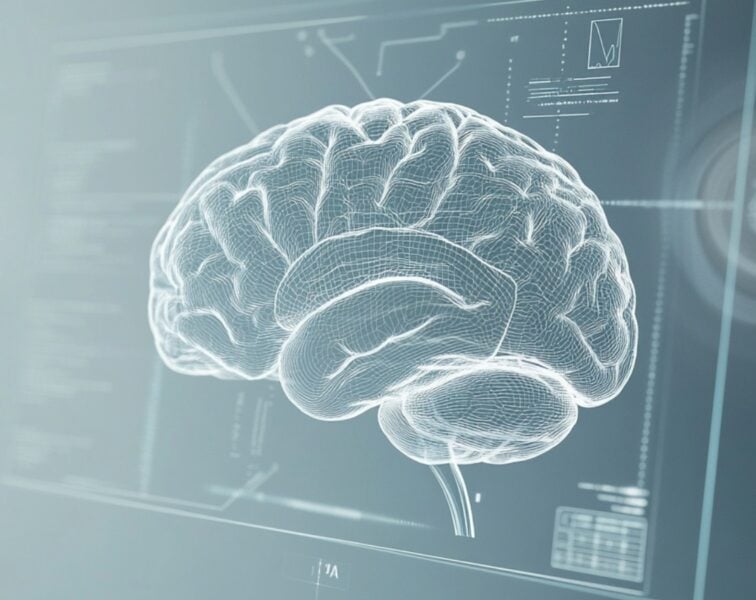Why do those last few “O”s in a bowl of Cheerios tend to clump together in the middle of the bowl or around the edges? If you’ve ever wondered about this, you’re not alone. A couple of Harvard mathematicians actually published a paper on the “Cheerios effect” in 2005.
The physics behind the effect is pretty fascinating, involving the buoyancy of the cereal, the surface tension of the milk, capillary action, and the meniscus effect. Here’s an easily digestible 5-minute clip explaining the Cheerios effect.
You may be wondering at this point why the hell I’m talking about the physics behind breakfast cereal. A couple of reasons. The first is that I stumbled on a recent article about it. A team of Brown University researchers directly measured the forces at play in the phenomenon and published a paper on it in December. I’m sure there’s some joke I can make here about how many Ivy League schools it takes to finish breakfast, but I would just end up with egg on my face given my second reason. I love this kind of stuff because it’s born out of an open mind, child-like curiosity, and a determination to find an answer. Not to get published in a prestigious journal, not to win an award, not to advance a career, not to earn a degree, not to be more well-known. Quite simply, as Richard Feynman put it, “It is the pleasure in finding the thing out.”
§
I grew up in a restaurant. As soon as I was tall enough to reach the industrial sink and spray nozzle from a step stool, I was washing dishes by the metric ton. Eventually, I was splitting my kitchen duties between dish-washing and peeling carrots and potatoes (50 pounds at a time, no less!). By the time I was 12 or 13, I was helping with busboy duties, serving and clearing tables.
One frequently encountered problem, in particular, occupied a lot of my mental energy. Every time I served a patron their soup or coffee, I wanted it to arrive at their table without any trace of spillage on the underlying plate or saucer. But what was the best way to achieve this, shy of sandbagging and serving half-full bowls and cups? The natural tendency, of course, was to stare so intensely at the object I was carrying that I was lucky to avoid a grand mal seizure. Over time I experimented with other techniques ranging from not looking at all, to gazing back and forth from the cup or bowl to my destination on the “horizon.” I also experimented with my gait—fast versus slow, loping versus flat—I was really obsessed with this seemingly irrelevant problem.
It would be nearly 10 years, and 18 undergraduate and graduate courses in mathematics, later before I was finally able to build a mathematical model to examine this problem that still vexed me. (Though I no longer worked at my dad’s restaurant in college, I did still think about this problem every time I carried a bowl or cup of liquid.) Along with a friend, we decided a Bessel function would be the ideal tool to model the surface of our liquid. The model captured as many variables as we could incorporate—shape of bowl or cup, temperature and viscosity of liquid, and obviously as many forces as we could quantify. Sadly, I’ve lost about 30 IQ points since I was in college and I barely remember the nuances of the model, let alone the hours of coding to build it. But I do recall our conclusion: You are better off not looking at the bowl you are carrying and, instead, looking where you are going. It seems that by looking directly at the bowl, you tend to make micro-adjustments, presumably subconsciously and consciously, that actually amplify the waves in the fluid—the exact problem you want to avoid. By looking ahead, many of these waves that ultimately lead to spillage cancel each other out and actually create less wave motion in the fluid, which results in a clean plate or saucer when you get to the table.1Many years later I would see this same principle at work again while flying a small plane. Looking at the instruments lead to pilot-induced oscillations—up and down travel—that could be minimized by looking at the horizon instead of the altimeter. This realization gave me a profound appreciation for pilots who earn an instrument rating (i.e., those who can actually fly looking only at the instruments).
I have no idea if this model was correct. I’m sure someone out there has built a much better model since, and certainly computational capacities are much higher in 2020 than they were in 1995, but the point is the pursuit, not so much the answer.
One might ask, “Is that the best you could do with all that education?!” Well, I would argue that such pursuit is exactly the point of all that education. Sadly, once we get into the “real” world, much of that creative pursuit is replaced by “practical” considerations. Which may explain in part why I’m intellectually half the man I was 25 years ago. Not to rail too hard against my current profession, but this was unquestionably the hardest part of switching from mathematics and engineering to medicine. Creative problem-solving in medicine is reserved for the lab (for good reason), but for clinicians and clinicians-in-training (i.e., medical students) it has unintended consequences, including the dulling of the once-sharp sword of our minds.
As odd as it sounds, through medical school and into residency, I still made time to tutor college kids in calculus. Sure, the money was part of the motivation, but a much bigger part was the need to hang on to some semblance of problem-solving. The tug of quantitative problem-solving became so great, that it actually led to my complete departure from medicine in 2006, when I left for the consulting firm McKinsey & Company, where I would spend the next couple of years building stochastic credit models. But that’s another story for another day.
“All life is problem solving,” said Karl Popper. “All organisms are inventors and technicians, good or not so good, successful or not so successful, in solving technical problems.” The pursuit can often be more rewarding than the result.
– Peter




